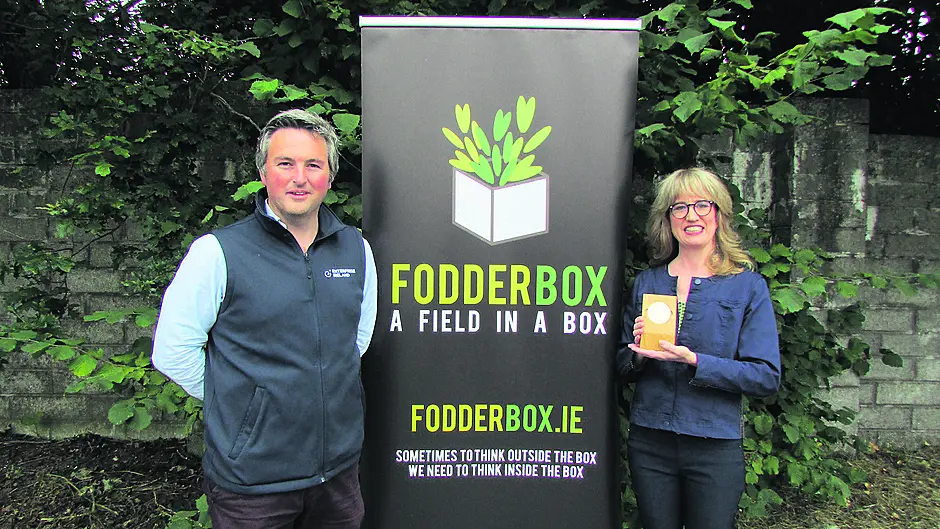A WEST Cork-based woman has developed a computer-controlled fodder production system which promises to save farmers money, radically improve cow health and increase milk production.
Ella Goddin’s FodderBox is essentially a ‘field in a box.’ It’s the equivalent of a 40-acre field in a 40’ container, with zero water pollution, air pollution, herbicides, pesticides, and insecticides.
It’s capable of sustainably producing a ton of fresh premium fodder per day by using hydroponic technology.
This is a high-tech method of growing plants in water rich in mineral nutrients instead of soil. Ella was motivated to begin her FodderBox journey after the fodder crisis back in 2018. She also runs a horticulture business in Carrigtwohill and at the height of the crisis had farmers ringing her in desperation looking for hydroponic equipment to grow fodder.
‘I could see that the market was looking for this and that technically this was achievable,’ said Ella, originally from the US, and now living near Dunmanway.
Ella says, ‘FodderBox is like printing environmentally sustainable stackable land, that produces a premium crop, day in and day out, for a fixed predictable cost.
‘Without any question this is the most sustainable method of fodder production on the planet.’
Her motivation is to help farmers save money and improve animal health.
‘A ton of grain based feed costs €300 to buy; two tonne of hydroponic fodder, using something like barley seeds, costs €100 to produce,’ she explains. Research also shoes that hydroponic fodder delivers peak nutrition that is maximally digestible.
‘Simply put, the biggest energy cost an animal has is digestion, because they don’t digest grain very well. This reduces that cost meaning there’s more energy for everything else.
‘A cow gains more weight, reaches sexual maturity faster, goes back into cycle faster on this diet,’ she said.
Thoroughbred racehorse trainers are using hydroponic fodder and seeing results, she added.
Since her light bulb moment she has conducted extensive research, got support from Enterprise Ireland, established scientific and market validation, and embarked on research trips to China, to get her agri-tech business to where it is today.
Last week FodderBox won the AgTechUCD Start-Up Award at the 2021 Enterprise Ireland Innovation Arena Awards run with the National Ploughing Association.
Her single ton unit is selling for approximately €60,000, but she can scale the application up, or down.
‘I’ve had a query from a farmer who wants to get out of silage entirely and install a five ton unit in an existing shed of his.
‘But the application could also be scaled down to one box for one plant.’
All that is required of workload is around one and a half hours a day to take out the fodder, clean the trays and replace the seeds.
Currently in development are FodderBox systems to produces micro-greens, salad, and wheat grass that will be available in commercial and domestic sizes.
Ella has also partnered with Teagasc on a 10-week animal trial of fresh Asparagopsis seaweed, cultivated in FodderBox, as an anti-methanogenic dairy cattle feed supplement.
This red seaweed, Asparagopsis, has been in the news after multiple research trials showed up to a 90% reduction in livestock methane emission.
Teagasc had already been devoting resources to this potential climate change mitigation strategy for livestock farming, but all research was limited to freeze-dried and dried Asparagopsis.
‘While a longer follow up trial will be necessary to determine if traces of the active ingredient, Bromoform, a carcinogen, are present in the milk or urine, finding a strategy to reduce our livestock methane emissions would be a global game-changer,’ she said.
See Fodderbox.ie.










